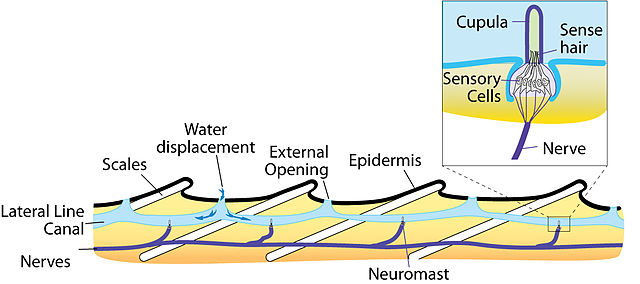Have you ever taken a moment to think about the fascinating nature of salamanders? These amphibians might not be able to move quite as quickly as lizards, but they have some extraordinary senses that prove their worth.
From mining through vegetation and detritus with their noses, to possessing an array of remarkable eyesight abilities – it goes without saying that salamanders are primed-up for any obstacles life throws at them. But what about hearing?
It may sound strange, but salamanders actually don’t have external ears or eardrums like humans and other mammals do. However, that doesn’t mean they don’t have ears at all. They’re just structured differently than us.
Unlike mammals, salamanders rely on their sensory organs to detect vibrations in the surrounding water. Do they ever look like they’re listening to you, or are they just looking around with those amazing little eyes? That’s exactly how they were trying to listen. Fabulous, isn’t it?
So salamanders do have ears, but they’re different from ours. That’s the sum of it. But do you want a broader explanation? You’ll find it down below…

Do All Salamanders Have Ears?
The ears of salamanders are different from the ears of mammals.
These amphibians have a system of hearing that is based on the vibration of the bones in their skulls rather than on the vibration of air molecules in the ear canal. This means that salamanders are able to detect sound waves through their skin as well as through their ears.
How Do Salamanders Hear?
So, how do salamanders actually hear?
Unlike mammals, salamanders do not have ears or auditory structures in the same way that we do. Instead, they have a simple structure called the “lateral line system,” which consists of a series of sensory cells located along the sides of the body. This system is used to detect vibrations and movements in the water, allowing the salamander to be aware of potential prey and avoid predators.

In addition to the lateral line system, salamanders also have small, simple organs called statocysts, which are located in the inner ear and are used to detect changes in balance and orientation. These organs are not as well-developed as the auditory systems of mammals, and are not used for hearing in the same way.
Overall, the sense of hearing in salamanders is not as well-developed as it is in mammals, and they rely more on their other senses, such as touch and smell, to navigate their environment. However, the lateral line system and statocysts do serve important functions in helping salamanders detect and respond to their surroundings.
For perspective’s sake, I’ll also talk about how other amphibians hear as well.
How Do Most Amphibians Hear?
Amphibians use their ears to communicate, locate prey, and avoid predators in both aquatic and terrestrial habitats.
Most amphibians have ears that are specialized for detecting sound waves in air and water. In general, amphibian ears are less developed and less sensitive than those of mammals, but they are still capable of detecting a wide range of frequencies.
The ears of most amphibians are located on the sides of their heads, either on the upper surface of the skull or just behind the eyes. Some species, such as tree frogs, have large, conspicuous ears that are used to amplify sound, while others have smaller, less visible ears.

Amphibian ears are designed to detect sound waves in both air and water, and they are able to do this through the use of specialized structures called “tympani” and “columella.” The tympanum is a thin, flexible membrane that is located on the side of the head and is used to detect sound waves in the air. The columella is a bone-like structure that is located inside the ear and is used to detect sound waves in water.
In addition to the tympanum and columella, many amphibians also have a structure called the “lateral line system,” which is a network of sensory organs that runs along the sides of their bodies. The lateral line system is used to detect vibrations in the water and helps amphibians locate prey and avoid predators.
Now that you know how salamanders hear and how it is different from other amphibians – let’s move on to this next question, “Do salamanders make a sound?” They can hear, but can they make it themselves? Why don’t we find out:
Do Salamanders Make A Sound?
While salamanders are generally quiet animals, some species are capable of making vocalizations or other noises.
One example of a salamander that is known to make sounds is the spotted salamander (Ambystoma maculatum). When this species is threatened or agitated, it may produce a soft, chirping sound by vibrating its vocal cords. This sound is thought to be a form of communication, possibly to deter predators or to alert other salamanders to danger.

Other species of salamanders may also make vocalizations or use body language and other forms of nonverbal communication to communicate with each other. For example, some species may wave their tails or display other types of behavior when they are threatened or annoyed.
Despite their ability to make some sounds, salamanders are generally quiet animals and are not known to produce the same types of vocalizations as mammals. They also do not make sounds as frequently as some other animals, such as birds or mammals.
How Does A Salamander Communicate?
How do salamanders actually communicate with each other? -that’s an interesting question that might pop in your head.
Different species of salamanders have different ways of communication. Below, I have mentioned a few ways in which salamanders communicate with each other:
Body Language
Salamanders can use body language to communicate with each other, including posture, gestures, and movements. For example, a salamander may arch its body or wave its tail to signal aggression or submission.
Vocalizations
Some salamanders, such as the red-backed salamander, can make vocalizations by forcing air through their respiratory system. These vocalizations can be used for communication and can include clicks, chirps, or whistles.
Chemical Signals
These amphibians, like many other animals, also use chemical signals to communicate with each other. These chemical signals can be produced by glands on the skin and can be used to mark territory, attract mates, or signal danger.
Finishing Up
In conclusion, salamanders have an interesting and unique way of hearing. Understanding how salamanders hear can help us better understand amphibians as a whole and provide insight into the evolutionary adaptations that allow salamanders to survive in aquatic environments.
As we continue to learn more about salamander behavior, it is not a far-fetched idea that we might find other species that use similar mechanisms for sound detection.
